I recently started using a prescription tretinoin cream, a generic version of Retin-A (Stieva-A).
Tretinoin is probably THE most popular and evidence-supported retinoid (vitamin A derivative) ingredient in skincare. It works as an acne treatment, for anti-aging (both wrinkles and uneven pigment) and a generous handful of other skin issues.
I’ve had a lot of requests for advice and tutorials on how to start on retinoids, how to stop peeling, and what sort of routine to use while on them, so I can finally talk about it with first-hand experience in way too much detail!
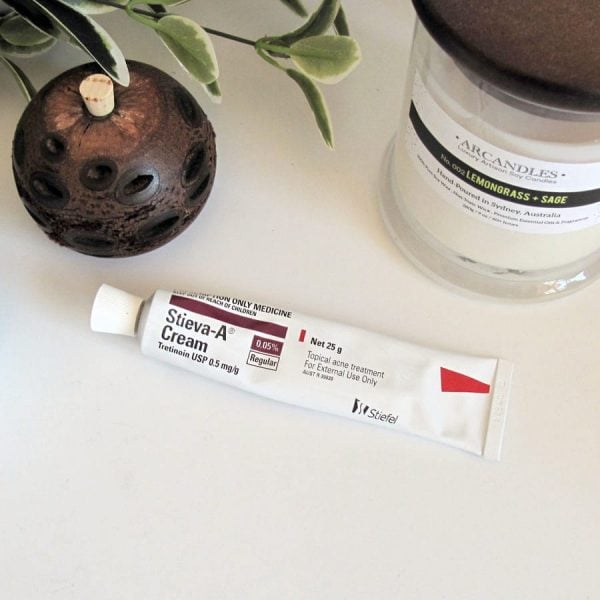
Here’s the video version – keep scrolling for the blog post!
What is tretinoin?
Tretinoin, also known as retinoic acid, is an active form of vitamin A.
It’s sometimes called all-trans-retinoic acid to distinguish it from isotretinoin (13-cis-retinoic acid), which is the active ingredient in the highly effective oral acne medication Accutane.
Vitamin A derivatives (retinoids) are one of the most studied categories of skin actives, since they work really well to fix a range of things including acne, pigmentation and wrinkles.
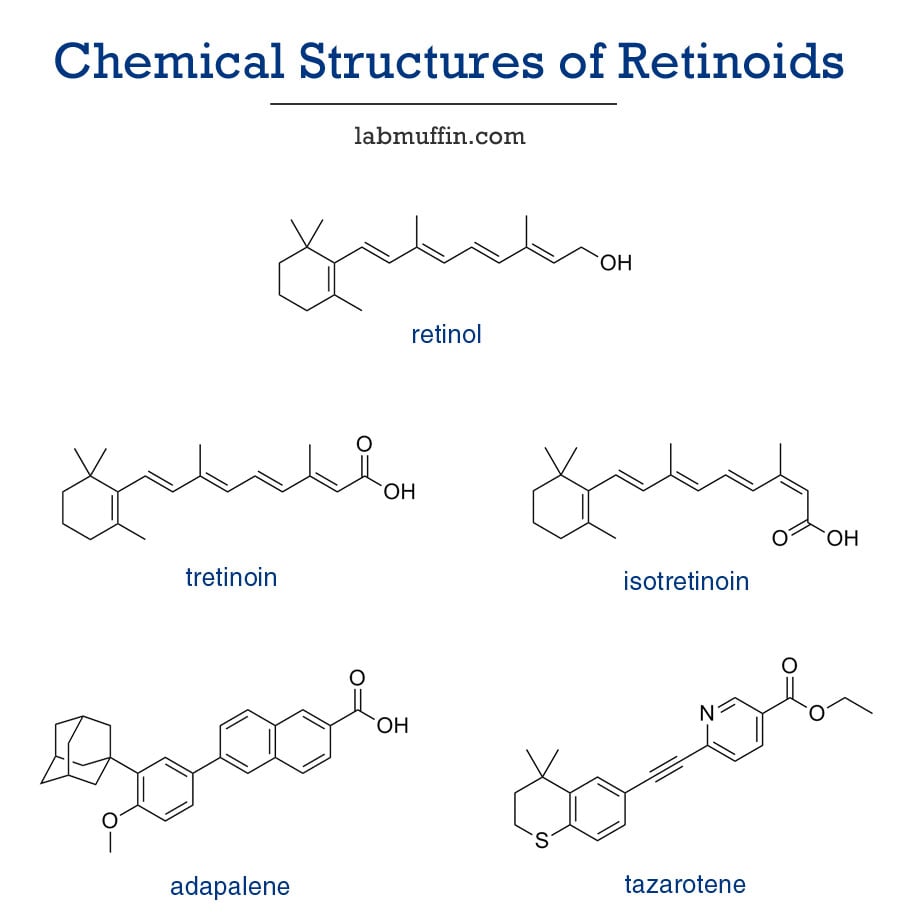
Retinoids work in a bunch of different ways. They affect the way skin cells grow and develop, and increase how quickly skin cells are shed.
This means that for acne, it’s harder for comedones (clogged pores) to form, and any that you already have will be pushed out faster. Open pores also let more oxygen in – the C acnes bacteria that inhabit inflamed pimples can’t survive when they’re exposed to too much oxygen, so they’re less prolific.
Retinoids are also anti-inflammatory as well, which is awesome since inflammation is one of the things that causes acne.
In terms of aging, retinoids help fade pigmentation by making pigmented cells shed faster, and they slow down melanin production and transfer as well.
Retinoids also increase several types of collagen in the skin, increase epidermal thickness, and make the stratum corneum more compact, which gives younger looking, plump, smooth skin.
Tretinoin Irritation
The main drawback to using tretinoin is that it’s quite irritating and often gives you dry, flaky skin that’s more prone to stinging and redness.
This is worst in the first few weeks until your skin gets used to it, but for some people (around 15% of people) this doesn’t happen at all, and for others it can take 6 weeks to clear up.
Tretinoin is one of the more irritating retinoids, but it’s also the one with the most studies to back up its benefits, so I decided to go for it anyway.
Tazarotene is more irritating, while adapalene (Differin), retinol and retinaldehyde are less. In particular, tretinoin causes dryness and peeling.
Since retinoids increase skin turnover, they can also cause purging, which is when a product makes your skin worse before it gets better because they basically make your skin expel all the baby pimples that were there before much faster.
Related post: Video: Is My Skin Purging or Breaking Out?
Purging is worse when your skin’s irritated, so it’s best to add the tretinoin in slowly so your skin can adjust. The two main ways to limit how purgey your skin gets is to introduce the product slowly, and look after your skin, so that’s the aim of my routine.
My Tretinoin Action Plan
I was prescribed a 0.05% tretinoin cream. Tretinoin comes in a range of concentrations from 0.01% to 0.1%, and lots of different formulations (time released, gel, creams etc.).
Cream formulas are gentler than alcohol-based gels even though tretinoin seems to penetrate better from a cream (I would guess it’s because wet skin is more permeable than dehydrated skin, and the cream base acts as a built-in moisturiser). Time-released formulas are also gentler, but more expensive.
My skin’s quite sensitive to retinoids, and I had an unpleasant experience when I used too much 1% retinol and had a nasty cold at the same time which made my nose shed skin flakes for about a fortnight (I have a theory that it gave me broken capillaries around my nose),
I’ve also found that there’s a lag time of about two days between me using a retinoid product, and actually experiencing the irritation and flaking. This means instead of monitoring my skin and adjusting my routine as usual, I had to take extra care to pre-empt irritation.
There are a few strategies that are commonly recommended for helping you build up to the full leave-on treatment for retinoids:
Using a lower concentration and building up: I was only prescribed 0.05% cream, so I decided to dilute it on my face by applying oil first. The oil should also give a time-release effect, since the tretinoin has to diffuse through the oil layer before reaching the skin.
Alternate day application: Pretty self-explanatory – use it every second day at first. I decided to be even more cautious and apply it every third day and build up.
Short contact therapy: This is where you apply the product like a mask, and only leave it on for a short amount of time before rinsing it off.
There are a few studies where short contact gave good results – in one study on acne, daily 0.05% tretinoin cream applied for 30 mins gave comparable results to leave-on tretinoin, and a lot less (~20%) of people had irritation even without moisturiser, compared to over 80% normally.
Mild skincare: This means using gentle cleansers and moisturisers, and avoiding actives like acid exfoliants while your skin’s getting used to the retinoid. If it’s really bad, dermatologists can prescribe a corticosteroid cream to help your skin recover.
Not applying tretinoin to skin while wet: It’s easier for ingredients to penetrate wet skin, so I made sure I always waited at least half an hour after washing to apply the tretinoin.
It’s also recommended that you dot the product around your skin and then rub it all in, so you can make sure it’s applied as evenly as possible.
My Tretinoin Routine
Gentle cleansers: Shu Uemura Cleansing Oil, followed by KraveBeauty Matcha Hemp Hydrating Cleanser or Peter Thomas Roth Cucumber Detox Foaming Cleanser. I also tried out a Dermaenergy cleanser during my tretinoin “induction phase” and it worked pretty well. I always use gentle cleansers, so no change here.
Related: The Lab Muffin Guide to Basic Skincare
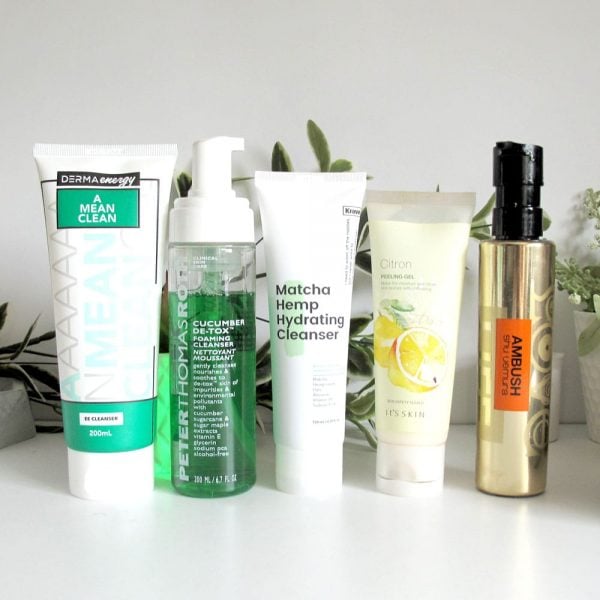
Gentle exfoliants: I’m usually quite gung ho with acids, but I decided to step it down and stick to lower percentages (like Pixi Glow Tonic or KraveBeauty Kale-lalu-yAHA).
Physical exfoliants were limited to peeling gels only (I’ve been using It’s Skin Citron Peeling Gel), and with minimal pressure (more on exfoliation in my Exfoliation Guide).
Humectant toners: My skin is dehydration prone with or without retinoids, so I kept using the most humectant-rich ones I had: Jurlique Activating Water Essence and Klairs Supple Preparation Toner.
Sunscreen: Sunscreen is a must while on retinoids. I’d recommend one that’s alcohol-free, so it doesn’t cause any massive stinging.
Moisturiser: Bucketloads. I used a mix of oils and anti-irritant moisturisers: Huxley Secret of Sahara Oil Light and More, rosehip oil (I used Freezeframe’s rosehip blend), Stratia Liquid Gold, Dr Jart+ Cicapair Cream and Bioderma Cicabio.
The two “cica” products contain the popular skincare active Centella asiatica, which I’ve written about before – it’s supposed to help healing, so I thought maybe it would be good for dealing with tretinoin irritation.
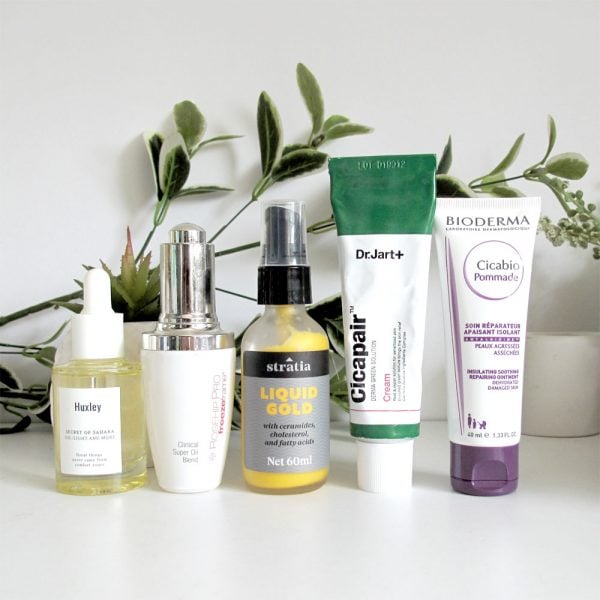
Make-up: I found that when I was peeling, foundation made everything look a lot worse, so I switched to just concealer after a few days. I also found that my usual starch-based powder was too drying, so I started diluting it with another powder.
Related post: DIY Mattifying Face Powder: Just a bag of corn starch
Schedule
Week 1: Short contact therapy
Application: 30 min in the evening, 3 days apart. I applied a ½ pea sized amount each time, and washed it off afterwards with a gentle cleanser.
Skincare: Humectant toner and moisturiser afterwards (Stratia Liquid Gold on one side and Dr Jart+ Cicapair Cream on the other).
Irritation: Zero irritation or peeling, only a tiny bit of dryness.
Results: None visible yet, although I didn’t get any new pimples
I decided to step it up.
Week 2: Oil underneath
Application: I slathered a thick layer of oil (Stratia Fortify or Huxley Secret of Sahara Oil Light and More) on my face, then applied a very small amount (maybe ¼ pea) of tretinoin cream on top.
The oil helped the cream spread really nicely. I did this every second day.
Skincare: Moisturiser afterwards (Stratia Liquid Gold on one side and Dr Jart+ Cicapair Cream on the other). On alternate days I used either humectant toner or weak AHA.
Irritation: Here’s when the peeling started in earnest. My peeling has a lag time of around 36 hours, so I kept thinking I was off the hook but then my skin would start peeling in the middle of the day when I didn’t expect it.
But then it’d clear up after a day. There was also some dryness and very mild stinging.
After the second application I zoned out during my skincare routine and ended up applying 10% AHA… bad idea! It left my skin feeling tight and stingy the next day when I applied sunscreen.
I tried some 5% AHA later and it was fine, so I banned my regular acid exfoliants from my skincare table until further notice.
There was also a noticeable difference between the Stratia Liquid Gold and Dr Jart+ Cicapair Cream sides – Dr Jart+ was significantly better at calming down the flaking than the Stratia.
I also tried the Bioderma Cicabio product, but I found that it was a bit too thick and gave me a few whiteheads near my nose (probably also partly from the irritation).
Results: I usually get a few big pimples around this time of month, but I didn’t get any which was nice but could have also been a fluke. I
also noticed that some post-inflammatory hyperpigmentation from a couple of old pimples was clearing up faster than usual.
Weeks 3 and 4: On bare skin, every third day
Application: 1/4 pea of tretinoin cream on dry skin (eep!) every 3rd day. Spreading wasn’t a huge issue. I tried to apply less on the parts of my skin that tends to flake and get irritated more (around my nostrils and chin).
Skincare: Humectant toner every day before tretinoin. Moisturiser afterwards (Dr Jart+ Cicapair Cream all over). Weak acid the day before tretinoin.
Irritation: For the first week there was some flaking around my nostrils and chin, but it was only visible near the end of the day thanks to foundation, and there was no irritation!
By the end of Week 4 I was able to use tretinoin every second day.
Results: I didn’t really see much of a change – maybe a bit more glow?
Week 5: None
Here’s where disaster struck and I tested a foundation that gave me an irritant breakout. I haven’t broken out from a foundation before, so it’s possible that the tretinoin-induced irritation made my skin more sensitive.
During this week I switched over to my emergency breakout routine and didn’t use any tretinoin.
Related Post: My Emergency Routine for Treating an Irritant Breakout
Week 6 to present: On bare skin, every third or second day
I was a bit worried about going back on tretinoin, since I built up my tolerance so carefully. But I applied 1/4 pea of tretinoin cream on my dry bare skin after my breakout subsided, and to my surprise there wasn’t any irritation!
So for me at least, tretinoin tolerance doesn’t go away in a week. I moved up to a 1/2 pea-sized amount every second day and it was still fine.
Here’s where I am now: a 1/2 pea-sized amount, every second day, with mild acid exfoliant once a week on a day when I’m not using tretinoin.
There’s no irritation, and I don’t have to use any special moisturisers (although I’m still using Stratia Liquid Gold on most nights).
Related post: My Current Evening Skincare Routine
That’s my tretinoin skincare routine, in excessive detail. I hope it helped some of you! I’d love to hear what you found helpful during your retinoid break-in period (if you survived it).
Pinnable image if you want to save this post for later!
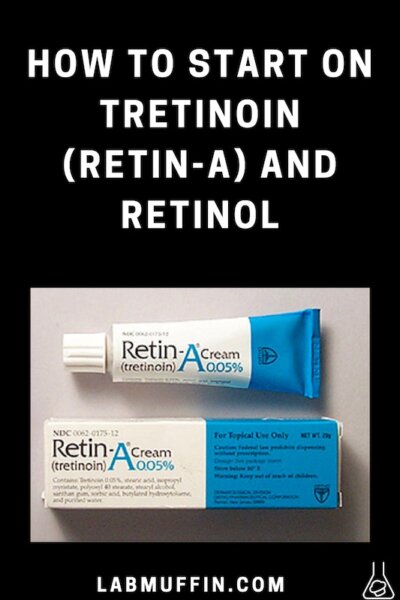
References
Veraldi S, Brena M, Barbareschi M, Allergic contact dermatitis caused by topical antiacne drugs, Expert Rev Clin Pharmacol 2015, 8, 377-381. doi: 10.1586/17512433.2015.1046839
Roeder A et al., Tazarotene: therapeutic strategies in the treatment of psoriasis, acne and photoaging, Skin Pharmacol Physiol 2004, 17, 111-118. doi: 10.1159/000077236
Veraldi S et al., Short contact therapy of acne with tretinoin, J Dermatolog Treat 2013, 24, 374-376. doi: 10.3109/09546634.2012.751085
Some of these products were provided for editorial consideration, which did not affect my opinion. This post also contains affiliate links – if you decide to click through and support Lab Muffin financially (at no extra cost to you), thank you! For more information, see Disclosure Policy.
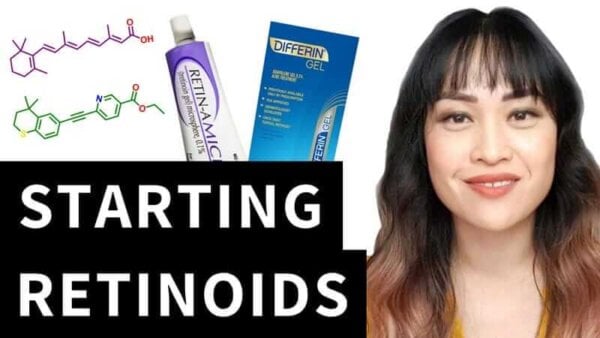


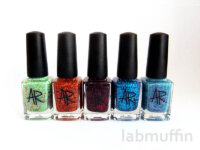
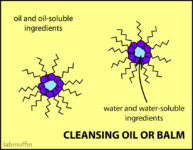
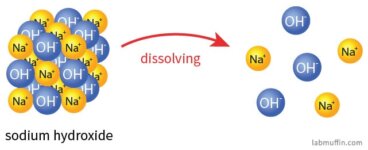
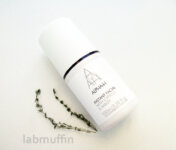
Right now I’m using a 0.025% tretinoin cream that really helped me get most of my acne under control, but I’m thinking about switching to adapalene because technically I’m leeching off of my friend’s prescription. Do you think my skin would have an adjusting period when I switch or should it be pretty seamless? I’d rather not experience that period of dry, flakey sling again lol
I have skin issues all my life and finally l used Retin-a and it works great. It take about three months but please hang in there. I’ve read so many reviews about retin-a being amazing and working almost immediately. So I’ve got it from “ret247get” (* just found this on Google.) I have used adapalene (differin) and so many other products. I decided to give differin a try after seeing the commercials. I have been using this product once a day for a week and have broke out! I have an incredibly large zit right above my lip and my skin is so dry. I have gone to many Dermatologist, chemical peels l can’t remember them all.
Hello, do you recommend using Tretenoin 0.025% on the entire face or just the target area like a bit of melasma forming near the cheeks, old acne scars and smile lines?
Are you able to reintroduce strong acids or microneedling once your skin is used to the prescription Retin-A? Or is it too much irritation for skin to handle?
I’ve had great results with peels and microneedling. I don’t want to have to stop them forever if I go on Retin-A or Differin.
Totally can go back to those once your skin is settled. I do both and use tret.
I need a good crème To get rid o f deep wrinkles.
Thank you so much for this, I love how detailed your posts are! Sorry if I missed this in the text, but how long do you wait before applying other products on top of tretinoin? I’m planning to start using tretinoin this spring if my friend manages to get me a tube OTC during her holiday, if not, then hopefully in September. I don’t think I can even get it on prescription where I live, though it’s probably worth checking just to be sure. I dabbled with some 1% retinol, but was too sheepish to use it more than two or three times a week. There was no peeling, but my skin was too dehydrated, partially because my cleanser wasn’t gentle enough and also because it was the dead of winter. Eventually I gave up after a few months until I figure out what next since I won’t be repurchasing the same product. I do have a cautionary tale though: don’t start experimenting with retinol a day before going to the public pool. My extremely non-reactive skin felt like it would burn off of my face, it even got worse once I washed everything off at home (no other symptoms though, just very mild redness).
Hi Michelle, did you wash your face twice in the evenings when you were doing short contact therapy? Am using surfactant free cleanser (LRP Tolerianr Dermocleanser) at the moment because my skin gets irritated from even plain water!
Wondering if I can just use this to pat off rather than washing twice. Plus the first wash will need to air dry before tret/moisturiser before tret.
Great post! As always. I really loved the idea of taking an oil underneath the tretinoin. Do you let this sink in completely before adding the tretinoin or put it on right away?
When put it on top of oil, how much do you think it reduces the efficiency of the tretinoin?
Lastly: when starting with tretinoin treatment, should one stop using retinol or continue and slowly replacing it with tretinoin?
I don’t use BHAs or AHAs ever. I don’t exfoliate chemically or physically at all, because after having a lot of chemotherapy & radiation for cancer my skin never went back to normal. It was always sensitive but now it is hypersensitive, extremely prone to dryness, & seems to be exhibiting signs of aging not often seen in people of my age with my skin tone . These changes may also be due to the fact that the treatment caused me to begin peri menopause many years too early. I am able to tolerate a vitamin C serum, though I must admit I don’t use it anywhere near the appropriate frequency. I would like to start using generic Renova (tretinoin in an emollient base). Would you recommend discontinuing the vitamin C serum temporarily when I begin using the Renova? Sorry for the long buildup, I just thought the background information was pertinent.
Yes, I’d recommend stopping everything before starting on tretinoin, especially since your skin sounds super sensitive! I’d also use the lowest concentration possible and start with short contact therapy maybe once a week – don’t be tempted to start too quickly. Tretinoin is the strongest, most irritating ingredient I’ve ever used, and I use AHA and BHA and vitamin C all together in my routine.
Thank you so much for taking the time to answer me Michelle; I really appreciate it. I will follow your advice.
should use the Microsphere A Gel 1%. Will not make skin irritated and red and can be applied onto skin right after washing unlike regular Retin-A gels.
Microspheres release the medication more slowly, over time, allowing it to be effective on your skin for longer periods and without much irritation.
Short contact therapy: This is where you apply the product like a mask, and only leave it on for a short amount of time before rinsing it off. There are a few studies where short contact gave good results – in one study on acne, daily 0.05% tretinoin cream applied for 30 mins gave comparable results to leave-on tretinoin, and a lot less (~20%) of people had irritation even without moisturiser, compared to over 80% normally.
Hello Michelle, I’m wondering do you wash your face with water only or with cleanser? And what is the next step? Using toner or straight to moisturiser? Thank you so much for your respond 🙂
I washed my face with a very mild cleanser afterwards, then toner and moisturiser.
Dear Michelle, thank you for your answer. Gonna try your “therapy” tonight 😀
My skin always peeled the next 2 days after application and won’t stop to peel for the next 5 days continued with dry patches no matter how much hydrators (toner, essence, serum & moisturiser) i use haha. So i guess this method can reduce the peeling
This was a great post and good timing for me as I’ve been thinking about going for prescription strength. I’d love a post on all the different retinol-type names/products and the difference between prescription and non. There’s so many different products with similar sounding names and I never know if what I’m buying is actually doing anything. Really enjoy your blog – thank you!
I’ve had that on my list for a while! Thank you 🙂
Good luck using Rx tret! I’ve been using it for years, and it’s been very helpful, but unfortunately my health insurance in the US only covers a very weak percentage. You’re absolutely right in the methods that you’ve recommended! My dermatologist suggested CeraVe to use with it, and I’ve found it really does help. I do like to experiment however, so I sometimes stray to other ceramide creams, like Dr Jart or SkinMedica. Good luck!
Good luck using Rx tret! I’ve been using it for years, and it’s been very helpful, but unfortunately my health insurance in the US no longer covers Tazarotene, and only covers a very weak percentage generic.
You’re absolutely right in the methods that you’ve recommended! From the gentle cleansers, to the wait times, to slowing down on acids, and to the humectant toners. Also, I didn’t know that things in general penetrate wet skin better. I wonder if I can use that tip to help my Vitamin C serum penetrate better?
My dermatologist suggested CeraVe to use with it, and I’ve found it really does help. I do like to experiment however, so I sometimes stray to other ceramide creams, like Dr Jart Ceramide or SkinMedica TNS Ceramide, which is my current favorite. I really wanted to love Stratia Liquid Gold, but it just wasn’t enough and I could tell my barrier was compromised, my skin was very red when I used it. Underneath my Ceramide cream, I like to mix a couple of serums with niacinamide and hyaluronic acid, and I’ve found those to be really crucial to keep my skin healthy. Good luck on your tret journey!
Thanks Katrina! I’ve been starting to use Dr Jart Ceramidin as well, although I don’t see much of a difference between that and Cicapair (Cicapair seems to work slightly better), but I need to use it for longer 🙂
Michelle, have you ever heard of the youtuber HotandFlashy? She’s a 50+ year old Youtuber who started using Retin-A, and even though she has really sensitive skin, she created a method to acclimate to it without irritation. I’m really curious as to what you think about her approach: https://www.youtube.com/watch?v=R3kdRL1A0jg
Yes I have heard of her! From my brief viewing of the video it looks like her approach is adding it in very slowly, especially around the eyes/nose/mouth area?
Yes! Thank you so much for your reply 🙂 I believe her method was using it once a week for a month, then twice a week for the next month, then 3 times a week for the next month, etc. until she was eventually using it every day. She dialed it back if she was getting any irritation, and she started with a lower strength (0.05% instead of 0.1%, but I suppose you could even use 0.01%). Do you think that approach would be wise for sensitive skin? I would love to try retinoids, but I’m a bit terrified. I was really relieved when Angie said she she was able to acclimate to retinoids with irritation using her method, despite having aged and sensitive skin!
Hey Omi, just thought I’d reply to this since it may be of value to you. I’ve had eczema since infancy so have highly, highly sensitive skin as a result. I too wanted desperately to incorporate tretinoin into my skin care regimen for its anti-aging benefits. I followed Angie’s instructions to a tee and cannot remember ever experiencing any irritation or intolerable side effects. I think it took me roughly five months to work up to nightly usage, but I got there without issue. That was probably three years ago now, and I’ve used it daily ever since. I do have the occasional flare up, but I treat with my prescription topicals and go straight back to the tretinoin once my skin has calmed down. Everyone’s skin is different so I can’t speak to how your skin will react, but I did want to chime in about Angie’s method because my skin is ultra sensitive and I was able to make tretinoin work. Hopefully you (and others) can too!
I found that the Zelens Power D Treatment Drops, applied after adapalen, helped me with the flaking. I only use it every other day and limit acids to twice a week though, because despite it being more gentle I did experience flaking, especially around my mouth and chin.
Looks like it has lots of nice oils in it! 🙂
I just started 0.025 Tretinoin last night and also used the Vitamin D drops but before so it would act as a buffer. Should I be applying it after :/
Love the level of detail in this! I’m an Aussie living in Canada at the moment and managed to get my hands on Differin recently while in the US. I haven’t tried it just yet as I’m going to build up my tolerance a bit first. I’ve used OTC retinoids for a few years but nothing too strong – just finished up Luna which never caused me any irritation and am starting on the Ordinary 2% granactive which I know some people have experienced irritation from using. Although it’s a different form of retinoid (the one that looks like hydroxy-pina-colada) which is supposed to be very gentle and non-irritating so I’m not sure if that’s any indication as to how I’ll react to Differin. But I’m planning on getting up to daily use with that and then switching to Differin twice weekly and see how that goes. I hadn’t thought to try the short contact option that you mentioned, but I’m thinking if I experience any irritation or if I get worried I’ll buffer it with oils/moisturiser first and see how i get on with it that way. I’m really not too keen on peeling or having a reaction of any kind!
You can get Differin in Australia over Iherb (it’s expensive though). Just FYI if you decide to move back to Australia.
I’ve also been using the Granactive Retinoid 2% for a few weeks now with zero irritation – not sure I would ever go down the Tretinoin route but I’m not sure if I am getting any benefit yet from the Granactive (although I swear the vertical lines above my lips seem to be less noticeable). I know this is a long term thing but can’t seem to find any info about this retinoid apart from on Niod’s own site and they are biased lol.
Any chance of you breaking the blurb down into something us lesser mortals could understand?
I was prescribed Renova which I think is .02% Tretinoin and never had a break in period. Just started in daily with the prescribed amount. Been using it for about 10 years and noticed a huge difference when I stopped it for a few months. I aged years in that short period of time.
Hi Michell, I’m a Big fan of your posts, How long the tretinoin can use?, it’s for permanente use or you recommend rest?.
Many thanks for sharing 🙂 As usual, very useful!
I’ve used tretinoin 0.05 % before every night, but now I’ve been using 15% ascorbic acid or 20% azelaic acid one night, tretinoin or adapalene the next, and then a night off with just a moisturiser.
I used to use paula choice’s 2% bha together with tretinoin, but my derm told me not to use it when she saw my face. She said that I should use 2% bha cleanser and leave it on my face for five minutes, use a niacinamide toner without alcohol and wait for 30 mins before using tretinoin. And then I use Avene’s Cicalfate Post-Procedre cream or Antipodes light cream. I don’t use any other serums, my derm told me that it would be silly as the tretinoin-cream is mineral oil based.
When I use tretinoin or adapalene in the evening, I also use retinyl retinoate cream serum with vitamin E, C, hyaluronic acid and glycerin in the morning. I really like the texture of this cream serum and don’t have to use other serums, only spf. It’s expensive but must say I’ll be buying it again. This is one of the best serums I’ve used, and it has been especially effective around my mouth and eyes. The serum is silky smooth but without silicones. They use the plant-derived emollient and silicone alternative, heptyl undecylenate.
Which cream serum are you loving? I couldn’t find the brand. Thanks!!
Hi Michelle!
Thank you for sharing such detailed information. I’ve been on Retin-A Micro for a little over a month for anti-aging. I had briefly tried adapalene since it’s now OTC in the U.S., but experienced a great deal of irritation with it, including redness, dryness, peeling and constantly feeling like I had a bad sunburn. I did a lot of research and realized that my skin barrier was compromised, so spent quite a bit of time working on getting my skin back to a healthy state before starting the Retin-A Micro. I also followed a lot of the same advice that you’ve given here, and thus far have had a very good experience with it other than a bit of dryness and peeling.
From looking at photographs, watching videos on YouTube, and doing a lot of reading, it seems that the majority of people experience peeling in the chin area. This is where I’ve experienced the greatest amount of dryness and peeling, even when I don’t apply any directly on my chin while applying it to the rest of my face.
Is there any scientific reason why the chin area would be more prone to dryness and peeling than other areas of the face? I’m grateful that I’m not experiencing any discomfort and thrilled with how the rest of my face is responding, but would still like to know why my chin keeps peeling.
BTW…I’ve used Bioderma Cicabio CREAM with fantastic results! I wonder if the pommade that you used was too occlusive for your skin (assuming that you used the Cicabio in your photograph). Bioderma Cicabio Cream is also much less expensive than Dr. Jart+ Cicapair Cream.
Looking forward to updates on your tretinoin progress.
Best,
Jules
Thanks so much for your comment!
The chin tends to be one of the places with the most permeable skin, so it tends to be more sensitive.
I’ve been meaning to try the other Cicabio product… but I’ve misplaced it -_-
I’ve been using retin-a since my thirties. I’m now 51 and damn this stuff works. Not to sound vain but my skin looks sooooo much better than most other women my age that I know. Smoother, more plump, more even toned. I use the lowest strength and mix it with Drunk Elephant hydra serum, I forget exactly what it’s called but the one with the light blue cap. It dilutes it and makes it more emollient. I almost never get peeling or irritation.
Thanks for another great post, I really enjoy your blog.
I hope I can say that too at 51! Thank you 🙂
“Cream formulas are gentler than alcohol-based gels even though tretinoin seems to penetrate better from a cream”
You linked this sentence to “Short contact therapy of acne with tretinoin, J Dermatolog Treat 2013”.
Does it compare the efficacy of gel vs cream formulations? The abstract only discusses better tolerability of short-term contact with cream, with no mention of gel. I am interested in knowing which is more effective!
“Cream formulas are gentler than alcohol-based gels even though tretinoin seems to penetrate better from a cream”
You linked this sentence to “Short contact therapy of acne with tretinoin, J Dermatolog Treat 2013”. Does it compare the efficacy of gel vs cream formulations? The abstract only discusses better tolerability of short-term contact with cream, with no mention of gel. I am interested in knowing which is more effective!
It’s in the discussion of the paper 🙂
I wonder if I should consider retinoids just to thicken my skin? I have managed to break the many, many layers of dead skin on my face (oily skin) with gentle AHA, BHA, PHA toners and gel peels but I’m wary of overexfoliating. So, how can I get to a point of less dead skin, and more new, healthy skin layers? Are retinoids a good idea? Curently I’m using a vit C serum and vit E mask from Klairs, Missha’s First Treatment Time Revolution essence, so lots of vitamins and moisturising, but not sure about cell renewal…
Love your tips!!
Is there a way to bleach and wax facial hair while on tretinoin?
xo
Your experience was s similar to mine, though I did not do an oil under because I had the microencapsulated Retin a. I also found relief with Dr. Jart’s “cica” products. I used the overnight healing mask that 2nd week and it really helped. I’ve only had to deal with peeling since then, not irritation. I added Liquid Gold I’m on week 5 and it’s been so great at keeping my skin balanced.
Would be interested for a Tretinoin update from you?
I am curious how you have been faring with Retin A now, at almost ten months. Does any irritation remain and are you happy with the results?
I‘m using a pea sized amount of Tretinoin 0.05% three times a week (Mon, Wed and Sat), for my face and neck.
It took me a year to build up to it but now I‘m happy with my routine.
I am quite lazy and would prefer not to add an extra day, for convenience‘s sake.
But I am wondering: should one use as it as often as the skin tolerates?
Or am I still benefitting from 3 days‘ use?
Thank you in advance!
Also thanks for your amazing work. I love your blog and I‘m subsribed to it as well as your wonderful YouTube channel. Thanks so much for sharing your knowledge and research in such engaging and enjoyable ways!
I‘m using a pea sized amount of Tretinoin 0.05% three times a week (Mon, Wed and Sat), for my face and neck.
It took me a year to build up to it but now I‘m happy with my routine.
I am quite lazy and would prefer not to add an extra day, for convenience‘s sake.
But I am wondering: should one use as it as often as the skin tolerates?
Or am I still benefitting from 3 days‘ use?
Thank you in advance!
Also thanks for your amazing work. I love your blog and I‘m subscribed to it as well as your wonderful YouTube channel. Thanks so much for sharing your knowledge and research in such engaging and enjoyable ways!
Wowza, Michelle this was immensely helpful. Exactly the help I needed with my routine. Thank you so much!
Thank you, I use tretinoin by prescription because I have melasma, It is a difficult journey, everything has happened, terrible irritation, acne landed, dry skin(I’m oily skin) no good guide for my dermatologist. The day I came to the clinic for my peeling my face burned, was a terrible experience for my skin.
I’m stop again my tretinoin tx, because my last crazy acne back, I hope this week back my tx again. My game change cream for this last process of freaky acne with was Avene Cicalfate skin repair emulsion post-procedure.
Michelle, I was wondering if you’ve done testing on drug store products for skin care? Specifically for starting the Retin-A? I would sure appreciate any tips as I am starting Retina-A but was hoping to get some drug store products. Thanks in advance for your assistance.
Ericka
Hi Michelle,
Do you know how long it takes for Tretinion to be absorbed into the skin I can’t seem to find it anywhere?
Thank you
James
It says in this article that it takes around 20 minutes.
This was really informative, thanks! I’m loyal to vit c but now i’m thinking i might try retinoids sometime.
This is a rather selfish suggestion, but could you maybe make a post connecting rate laws to some skincare concept sometime? They’ve always been tricky for me to understand and your explanations help me so much.
I have extremely sensitive skins even when my skin barrier is intact but not to the point of eczema. I haven’t tried Retin A yet; I’m still working on OTC tolerance. I successfully introduced Demarche Labs BioRewind into my skincare as my first retinoid. I have oily skin so a combination with silicones and oils was not good for me. I started out very slowly as if it were prescription and stopped all other exfoliants. I later was able to introduce my daily BHA. Since I have used other brands – Paula’s Choice, Murad, Evas Naturals, Ordinary, Kate Sommerville. I saw the most improvement from Murad daily plus no irritation at all, but as it was a bit emolient, I decided to try Kate Sommerville every 2nd day. Moe often gave me irritation (without any exfoliants). I will likely go back to Murad, which I could use daily with my Sunday Riley Good Genes lactic acid (I can’t tolerate AHAs) and my BHA and VIt C in the morning.
Just a note on my previous post: Demarche Labs BioRewind was not oily or lots of silicones. As I was typing, I accidentally dragged and dropped the sentence from below where I was mentioning the other retinoids I tried.
Hey, Michelle. I’ve been using adapelene + benzoyl peroxide (epiduo) in the evenings for about 3 months. I wash my face in the mornings with a gentle cleanser, but I’d rather wash it with just water. Do you think it’s a safe choice? I’m scared of causing dark spots if I don’t remove it right. But I use sunscreen everyday anyways.
In the mornings after using retinol, do you wash your face with just water or do you use a cleanser?
Thank you for the very informative article. I’ve not tried an retin-A yet – my skin is sensitive and doesn’t like change. I might give it go and see what happens.
Hi Michelle,
I have two questions which need your kind advise. Thanks.
1) You mentioned that It’s easier for ingredients to penetrate wet skin. Could you kindly advise why?
2) I have used Paula choice’s 1% retinol and I did not get any irritation. Does Tretinoin work better than Retinol?
hey michelle, its been a few weeks since starting on 0.025 tretinoin and from using it twice a week to every other day to almost everyday now. I think it’s safe to say my skin has adapted to it. Would you recommend I bump up the strength or just maintain it for a while? What is the bases for going to a higher level? And lastly regarding pregnancy and retinols, I know Vitamin A taken orally may lead to congenital defects to the baby. Is it also the same when applied topically? Thanks. love your blog
Hi! Would you consider making a blog post or video regarding red light therapy? I am curious about its claimed effect on inflammation with regards rosacea, as well as the effect on collagen. Would love to hear what you think about it!
Can you address using Retinol or Retinoids along with Vitamin C serums. I recently read that maybe you should not use both at the same time, due the differences in pH. I also saw suggestions of Only using Vit C during the day and The Retinoids at night and not to combine them. Is there any science or truth to this? Thanks so much!!!
Appreciate your honest opinion on using trets. If still unsure after this, best to go to your derma.
Hi Michelle, can you please clear up my muddled brain about chemical/ physical sunscreen and tretinoin? Is it a MUST to use mineral sunscreen while on Tret? I live in Singapore and have not found a good mineral sunscreen.
Hi Michelle, Isopropyl Myristate is an ingredient in Retin A cream 0.05%. Many users claim that they get clogged pores from using it. How can it be used to clear acne when there’s a highly pore clogging ingredient in it? What’s your opinion on this?
Thank you.
Its my Day 4 using retinoin 0.025%.i use it every night before bed time and wash it morning…now peeling over my chin and mild from other part of my face…im oily skon and feeling dryness all day…i put moisturizer as pharmacist prescribed and not enough to moisturize it…
Can i use Vit.E or white rice serum for moisturize it?
I must admit I don’t use it anywhere near the appropriate frequency. I would like to start using generic Renova (tretinoin in an emollient base). Would you recommend discontinuing the vitamin C serum temporarily when I begin using the Renova?
Hi there Michelle,
Nurse here and I enjoy reading all your blog posts as well as following you on YT. One question though, I would like to use Purito Dermide Cica Sleeping Pack as my night time moisturizer before my tretinoin. But would it block the tretinoin from penetrating my skin? Here’s what I know about Vitamin A in terms of oral consumption, it is a fat-soluble vitamin so the best way for your body to absorb this nutrient is to take it with fat. However, I am not entirely sure if this same principle applies to topical vitamin A. The reason I asked you this is because the Purito Sleeping Pack contains coconut oil and olive oil which are both emollients and occlusives. Let me know your thoughts on this! Here are the ingredients of the sleeping pack:
Water, Centella Asiatica Extract(225,000ppm), Cocos Nucifera (Coconut) Oil, Caprylic/Capric Triglyceride,
Glycerin, Hydrogenated Lecithin, Cetearyl Alcohol, Butyrospermum Parkii (Shea) Butter,
Olea Europaea (Olive) Fruit Oil, Butylene Glycol, Polyglyceryl-3 Methylglucose Distearate,
1,2-Hexanediol, Madecassoside, Asiaticoside, Asiatic Acid, Madecassic Acid,
Ceramide NP, Panthenol, Hydroxyacetophenone, Sodium Carbomer,
Hydroxyethylcellulose, Sodium Hyaluronate, Camellia Sinensis Leaf Extract
Kind regards,
Owen
Thank you for this! I just started 0.025 retin-a treatment a couple days ago and I took very thorough notes from your video to calm my anxiety over potential peeling before picking up my prescription. I’m almost through the first week, and so far I only saw one flake of dry skin directly under my nose, and three new super tiny white heads (one is already gone), and I think my pores already look better. One very stubborn red spot where I had a pimple several week ago has also significantly faded! I already spent the better part of a year working my way up to the strongest retinol product Neutrogena offers, but it didn’t help enough with acne I started experiencing due to stress and hormones this year.
I think the ‘mask’ technique is working pretty well for me, but my pharmacist recommended starting with a 1 hour mask and adding an extra hour each night I use it before washing off and moisturizing like crazy. I’m using a lower concentration than yours (0.025 vs. 0.05), and was instructed to use it every other night for the first two weeks, and every night after that.
I was also really surprised when both my doctor and pharmacist told me I should not use hyaluronic acid! I explicitly asked both of them after they said ‘no acids’, thinking it couldn’t possibly apply to something hydrating, and was surprised by their answers. It is very dry here (late fall in Canada), so maybe it has something to do with there not being enough humidity in the air to hold onto? For now I’ve switched to squalane oil, but I’m hoping to add some of my old products back in as I adjust to the treatment. (Although I have sort of been cheating with my niacinamide serum that contains hylaluronic acid on my ‘off’ days)
After spending loads on fancy retinol serums, I recently found out tret is NOT a prescription based product in Indian 😲
Potential use, misuse and abuse can be so scary!
Thank you so much for this post. I went to hard on the Tretinoin (the dr told me to use it twice a day) and my skin felt like it was burning off after two days! I’m now trying your method and it’s working really well so far.
I have a question about oil-free moisturising…the leaflet inside the Tretinoin box says to use oil-free moisturisers only. However, I’m finding the only thing my skin can tolerate with the tretinoin is face oils/anhydrous balms. All of my “super sensitive” water based creams cause an intolerable burning and I have to wash them off and apply the balms/oils several times a day so I can still move my face!
I was wondering – is there any science behind using oil-free moisturiser for acne (or for use with tretinoin generally)? I’ve read a lot of conflicting information on the internet but I think this is a really interesting topic…I have oily acne prone skin with hyperpigmentation and I haven’t found swapping out oils for oil-free moisturisers has ever made a difference to my skin situation.
Thanks again for this post (and all of your posts). Your content is really helpful and very engaging.
Maddi
Thank you so so so much!!
Very informative!!
Thanks so much for impacting us with your knowledge and time you spend to do research we appreciate.
How many grams is in a pea size amount? After reading your sunscreen article and watching your videos, I’m always wondering if I’m applying enough sunscreen, and now the same with Trentinion.
Honestly I don’t think it’s that strict – tretinoin was approved in 1971, ever since then the instructions have been “pea-sized amount”. I just judge based on the size of the frozen peas in Australia, but there’s a good chance they’re not the same size as a pea in the US in the 1970s… I’d recommend just using an underestimate at first, and adjust based on your skin’s reaction.
I just had a look through some of the clinical trials – the ones that had details on the amount for the face had “pea-sized”, or it was dissolved into a solution and they just applied it all over their face. So I think “pea-sized” is probably the instructions given in the studies too…
Should you use it in your 20s or is it better to wait until after age 30?